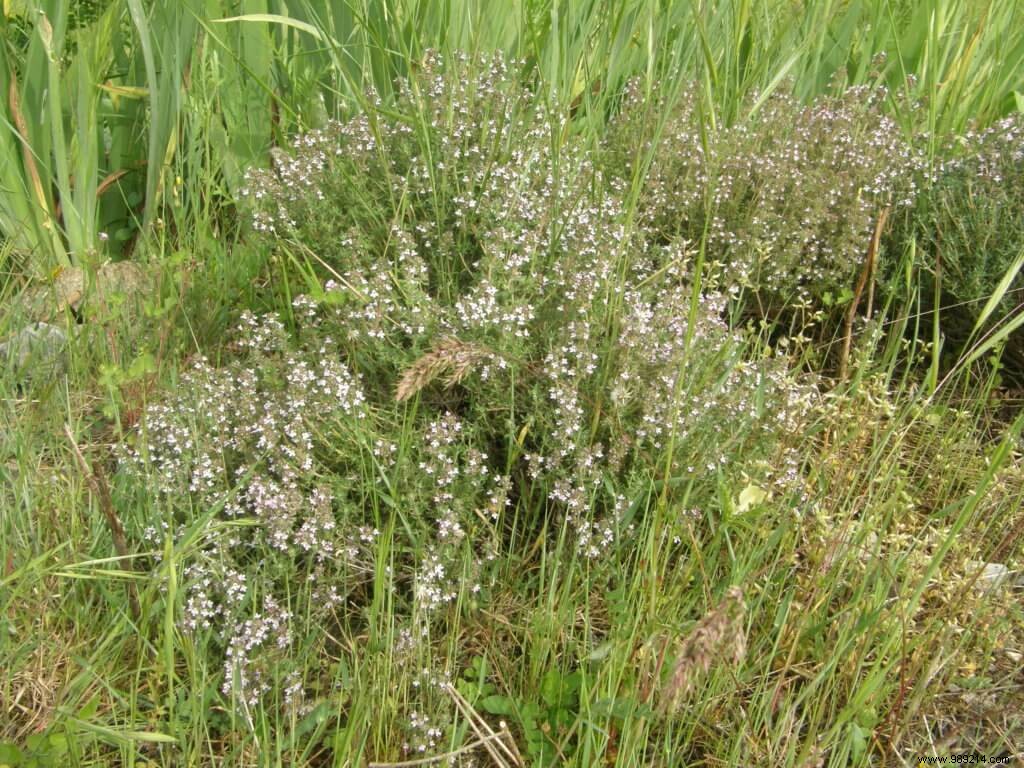It begins as a fable by La Fontaine, or as a tale for children, and grown-ups. Once upon a time, a thyme, a wild thyme, a savory and a farigoulette in a herb garden. No weeds, no! Aromatic, medicinal herbs, herbs for good women.
Here I open a parenthesis:herbs of good woman comes from good FAME , which gave famous, that is to say, renowned, famous.
These four garden companions ask nothing better to adorn your beds and finish after flowering in a teapot of water at 75°C to release their virtues.
Serpolet and farigoulette (or farigoule) are thymes (in two words! Nothing to do with the hot water in the teapot which would have made them lose their color…)
We know the Vulgar Thyme , thymus vulgaris, but a very famous thyme is entitled to a French name of its own, the serpolet ! It is also called creeping thyme. The thyme is the Thymus serpillum, carpeting, with a magnificent pink summer bloom. Very good for rock gardens, or planted in dry stone walls.
The farigoulette is theOccitan name Thymus vulgaris, the one that grows in scrubland. For those who do not know the scrubland, it is full of limestone pebbles crushed by the midday sun. It's beautiful and it smells great... the scrubland! And the place where thyme grows is a frigolet, or frigoulousse, or friguière...
Thyme, and its different varieties, are aromatic plants , full of essential oils, which make them essential plants in the garden.
Thyme (Thymus) is bactericidal , acts as a herbal tea against respiratory infections and calms the nerves. How to breathe calmly? With thyme of course!
But before ending up in a cup where a spoonful of honey will go to waste, the thyme will do its job in the vegetable garden. It is reputed to scare away the cabbage butterfly , this pretty white butterfly from the beginning of spring which comes to lay eggs under the leaves of your Brassicaceae, and whose caterpillars will transform the leaves into Alencon laces.
It would also have the property of bringing out the flavors of the surrounding plants.
Reserve a space in full sun , in a lean, calcareous soil. And vary the pleasures by playing with the cash available to you at the right points of sale. Wild thyme withstands -10°C, "common" thyme withstands -15°C
IT is better to grow thyme in your garden. Because by dint of cutting what has in nature, when the plants are in flower, there are fewer and fewer seeds and therefore fewer new plants. Let's leave the plants in the scrubland and install aromatic plants in the garden.

Thyme, Thymus vulgaris
Thymus can also accompany savory and rosemary . All require the same soil and the same care, that is to say not much. However, a shearing after flowering causes them to grow. Watch out for rosemary which is much taller (even creeping rosemary) and more vigorous.

Thyme in bloom
Savory is a cousin of thyme. Satureia hortensis is the one you definitely have in your garden. This is annual. The perennial savory is Satureia montana. Satureia, refers to the Satyrs… Good… It is also called in French donkey pepper. No, savory has nothing to do with Le Mans! The perennial savory withstands -20°C, the annual savory does not tolerate negative temperatures.
Other plants that can go in the same biotope,sage, lavender and santolina and their different species.
If you want to plant herbs in planters, here's the best way to do it.